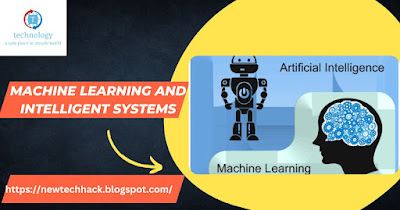Machine learning
(ML) is a subset of artificial intelligence (AI) that focuses on developing algorithms and models that enable computers to learn from and make predictions or decisions based on data. ML algorithms can analyze and interpret complex patterns and relationships in data, allowing intelligent systems to automate tasks, make accurate predictions, and improve over time without explicit programming.
Key aspects of machine learning and intelligent systems include:
- Data-driven Learning: Machine learning algorithms learn from data by identifying patterns, correlations, and trends. They are trained on labeled data, where the desired outcomes or targets are known, or unlabeled data, where the algorithm discovers patterns and structures on its own. The algorithms adjust their internal parameters iteratively to improve their predictions or decisions based on feedback from the data.
- Supervised Learning: In supervised learning, the ML algorithm is provided with labeled training data, consisting of input features and corresponding output labels. The algorithm learns to map inputs to outputs by generalizing from the labeled examples. It can then make predictions or classify new, unseen data based on its learned knowledge.
- Unsupervised Learning: Unsupervised learning involves training ML algorithms on unlabeled data. The algorithms aim to discover patterns, clusters, or relationships in the data without prior knowledge of the output labels. Unsupervised learning is useful for tasks such as clustering, dimensionality reduction, and anomaly detection.
- Deep Learning: Deep learning is a subset of ML that focuses on using artificial neural networks with multiple layers (deep neural networks) to learn and extract complex representations from data. Deep learning has demonstrated exceptional performance in various tasks, such as image and speech recognition, natural language processing, and recommendation systems.
- Reinforcement Learning: Reinforcement learning involves training an agent to interact with an environment and learn optimal actions through trial and error. The agent receives feedback in the form of rewards or penalties based on its actions. Over time, it learns to maximize the cumulative reward by exploring different actions and adjusting its decision-making strategy.
- Intelligent Systems: Machine learning is a foundational technology for building intelligent systems that can perceive, reason, and make decisions in a manner similar to human intelligence. Intelligent systems leverage ML algorithms and other AI techniques to process data, understand natural language, recognize objects, automate tasks, and provide intelligent recommendations or assistance.
- Applications: Machine learning and intelligent systems have a wide range of applications across industries and domains. They are used for image and speech recognition, natural language processing, fraud detection, personalized recommendations, autonomous vehicles, predictive maintenance, medical diagnosis, financial analysis, and many other tasks that benefit from automated data analysis and decision-making.
- Ethical Considerations: As ML and intelligent systems become more prevalent, ethical considerations such as fairness, transparency, accountability, and privacy become critical. Ensuring unbiased and non-discriminatory outcomes, explaining the decision-making process, and protecting sensitive data are important aspects of responsible AI deployment.
Machine learning and intelligent systems have the potential to transform industries, improve efficiency, and enable innovative solutions. They continue to advance with the availability of larger datasets, increased computing power, and advancements in algorithms. However, developing robust and reliable ML models requires careful data preprocessing, model selection, and validation to ensure accurate and trustworthy results.






No comments:
Post a Comment